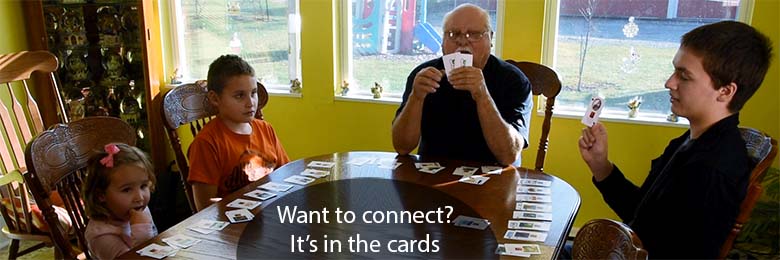It started as a frustration. Terri saw kids and parents in a pediatric hospital together, but they were in their own worlds. The kids were playing video games or watching TV. The parents were scrolling through stuff on their phone. At the same time, the parents sometimes didn’t know how to keep their kids safe from harm, so kids were getting hurt unnecessarily. While driving home from a road trip, Terri shared with Rob how disappointing it was that parents had such a difficult time communicating with their children and knowing how to keep them safe.
As their discussion evolved, they realized that they both had shared memories – and more information than they had intended – with their family while playing cards. That started the creation of a humble deck of cards that could connect kids and their kin. They quickly realized that the problem wasn’t constrained to the hospital, seeing parents and kids on their devices at restaurants and events. This was a cultural crisis.
It had to be more than cards to get the right conversations going. How could they keep kids safe – and connect them to their parents? That’s where the Centers for Disease Control and Prevention’s (CDC) vital statistics came in. They track the most common causes of trauma. That would serve as the basis for a set of short tips for how to keep children safe. A few tips from the American Academy of Pediatrics were added to get to the 54 tips that make up the deck. To that, child-drawn artwork was added to “match” the ideas – at least in the eyes of a child.
Rounding out this concept was a dice replacement. Dice are hard to control in public, a choking hazard, and, when they fall on the floor, represent an infection risk. Shuffle the cards, turn one over, and you get an approximation of a dice roll.
The cards are a way to start the conversation. Get yours today.
Rob & Terri Bogue
P.S. If your institution wants to hand them out, we offer custom branded options.

